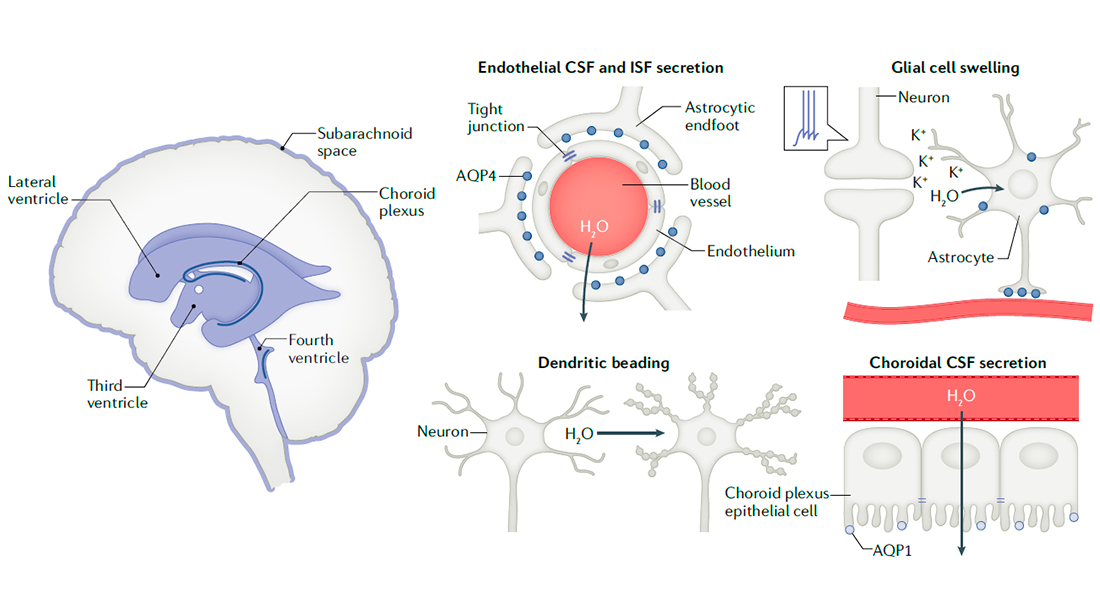Nanna MacAulay on the molecular mechanisms of brain water transport
In the overview article in Nat Rev Neurosci on 12 April 2021, Nanna MacAulay introduces the cotransport of water as an unconventional molecular mechanism that is the missing link to bridge the gap in our understanding of cellular and barrier brain water transport.

Our brains consist of 80% water, which is continuously shifted between different compartments and cell types during physiological and pathophysiological processes. Disturbances in brain water homeostasis occur with pathologies such as brain oedema and hydrocephalus, in which fluid accumulation leads to elevated intracranial pressure. Targeted pharmacological treatments do not exist for these conditions owing to our incomplete understanding of the molecular mechanisms governing brain water transport. Historically, the transmembrane movement of brain water was assumed to occur as passive movement of water along the osmotic gradient, greatly accelerated by water channels termed aquaporins. Although aquaporins govern the majority of fluid handling in the kidney, they do not suffice to explain the overall brain water movement: either they are not present in the membranes across which water flows or they appear not to be required for the observed flow of water. Notably, brain fluid can be secreted against an osmotic gradient, suggesting that conventional osmotic water flow may not describe all transmembrane fluid transport in the brain.
